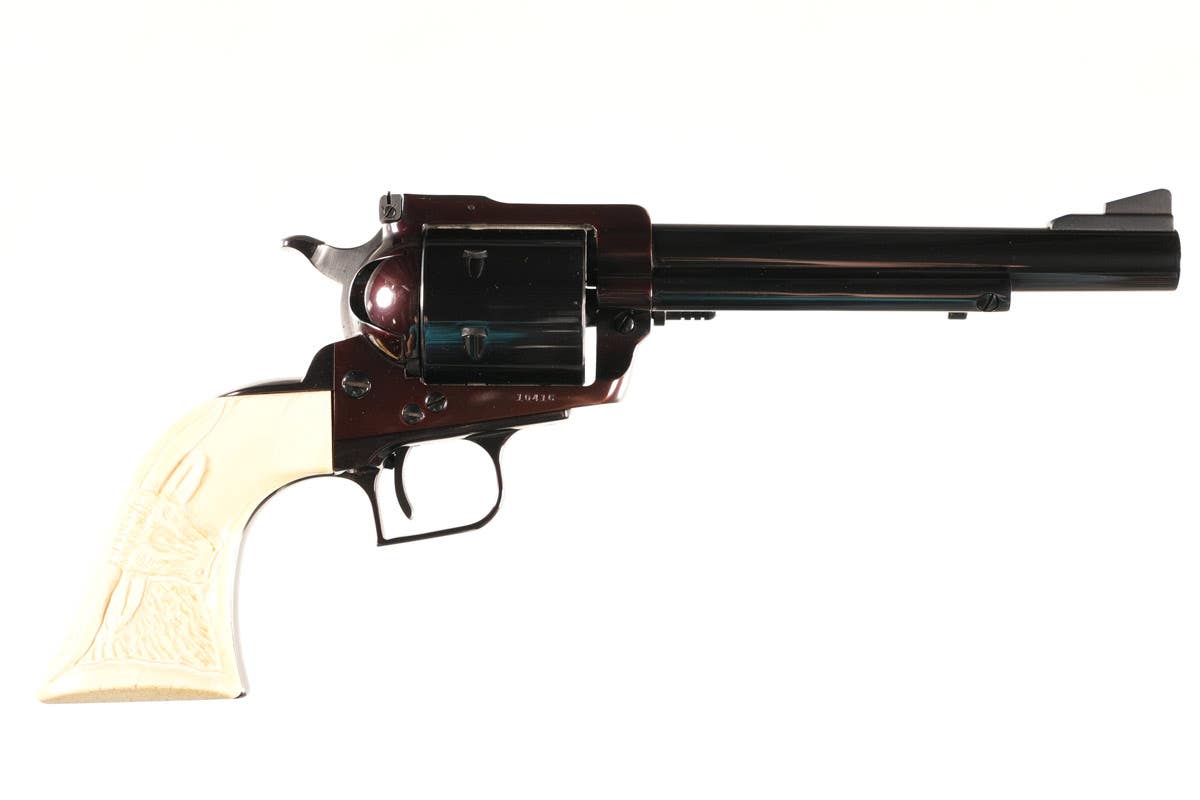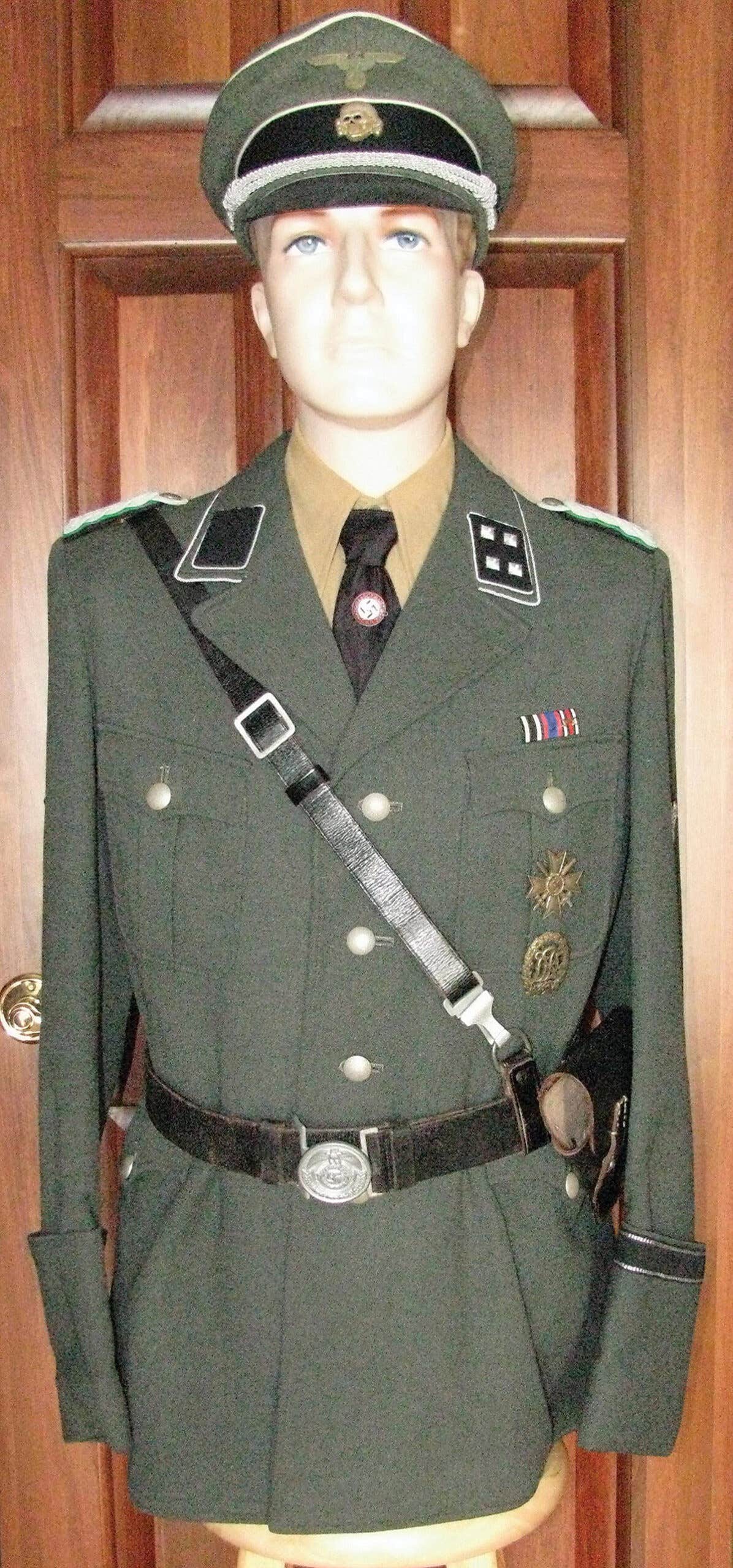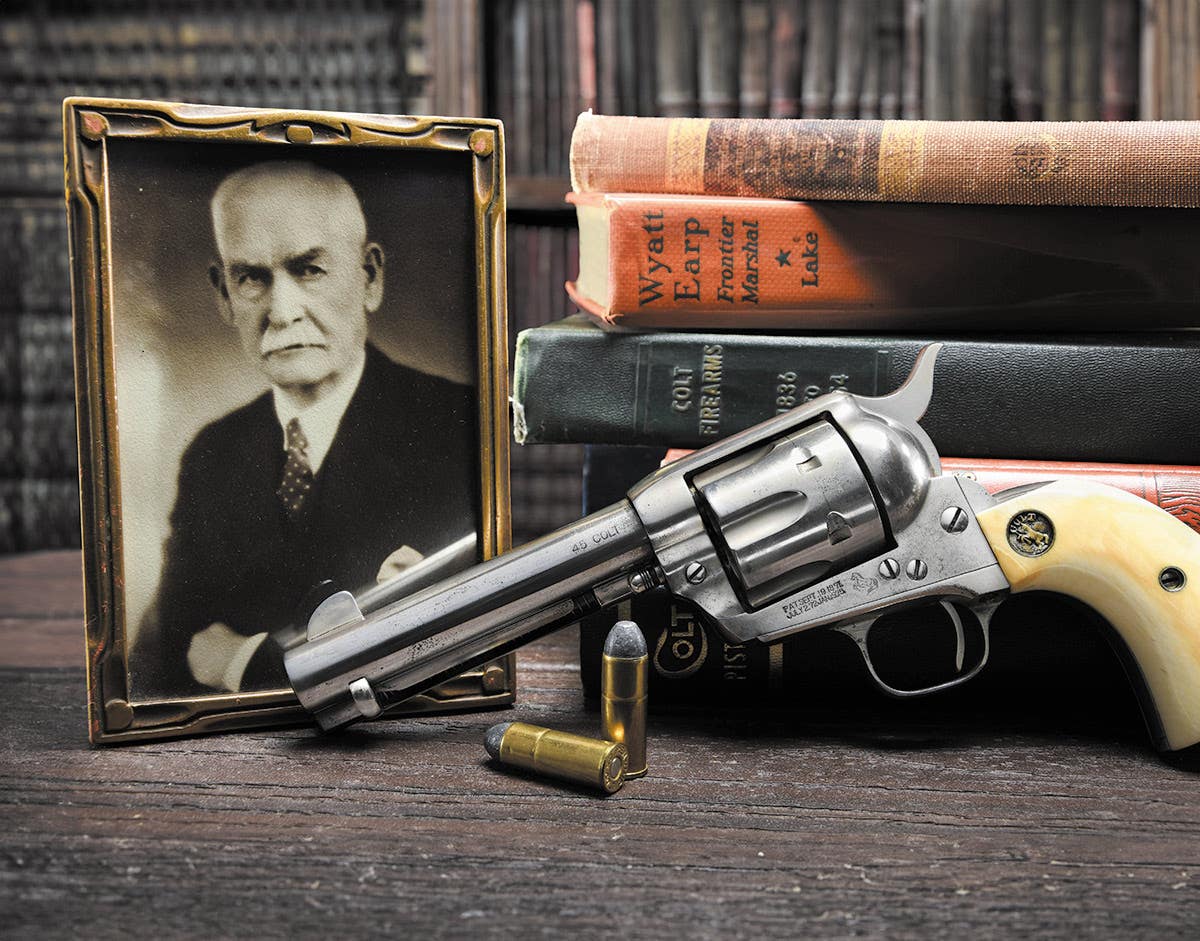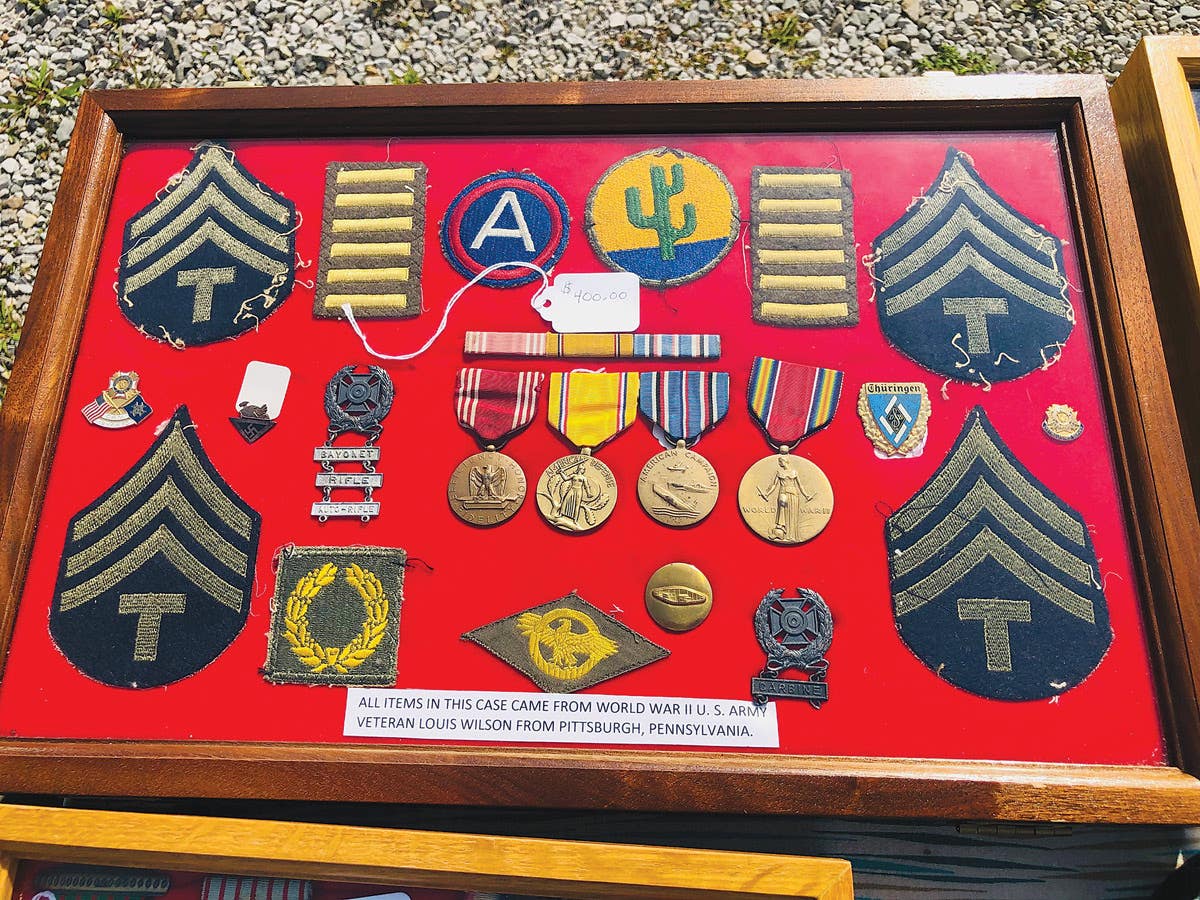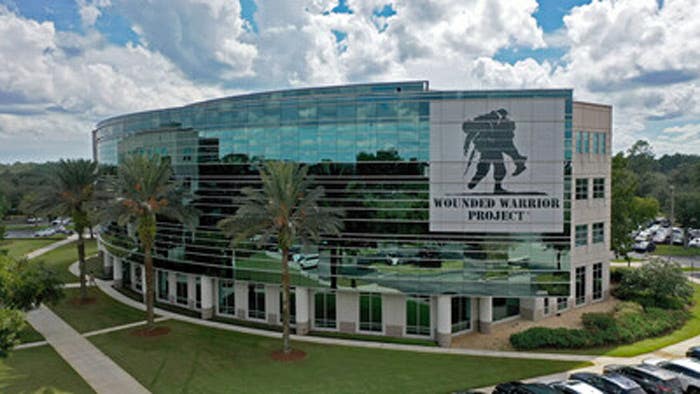D-Day Heavy Metal!
Taking a look at how Allied equipment stacked up against the Nazi war machine
When it came to defeating Nazi Germany in World War II it was said the British paid in time, the Soviets paid in blood and the Americans in equipment. That probably oversimplifies things, especially considering that the butcher’s bill in terms of American and British killed and wounded wasn’t exactly cheap – but it is clear that America’s reputation as “The Arsenal of Democracy” can’t be understated.
American industry provided two-thirds of all the Allied military equipment produced during the Second World War. This included 297,000 aircraft, 193,000 artillery pieces, 86,000 tanks and more than 2 million trucks! American industrial production was already the largest in the world when the U.S. entered the war and in four years doubled in size. The Germans and Japanese simply couldn’t keep up.
The big game changer for the Allies was “Operation Overlord”, the invasion of Normandy, which began the liberation of Western Europe. The Allies had a major foothold in Italy, and had actually captured/liberated Rome on June 5, 1944, but it was the “Operation Neptune”, the combat landings in Normandy, that opened up the “second front” and would ensure the defeat of the Nazis.
While the Allies certainly had the might, did they have the better equipment? That part is debatable, but in some cases the better equipment isn’t really better if you don’t have enough of it.
Here is a look at how the odds stacked up at D-Day.
Allied Air Supremacy
The Germans had developed some excellent aircraft during the Second World War, but the lack of a true heavy bomber meant the Luftwaffe had to not only rely on medium bombers, but pushed those planes to the limits of the endurance.
The Heinkel He 177 was as heavy as it got for the Germans, and while this twin engine aircraft had the payload of many of the four engine Allied aircraft, it had reliability issues – including engines that were infamous for catching fire. Three He 177s took part in operations on D-Day, but were all shot down by British Mosquito fighter/bombers. While 1,169 were produced there are no surviving He 177s today.
On June 6, 1944 only I/JG 2, I/JG 26, III/JG 26 and Stab squadrons were deployed within range of Normandy, and while dozens of aircraft reportedly took part in operations, the Luftwaffe was unable to tip the balance in its favor. This is because the Allies didn’t just have air superiority, but in fact maintained air supremacy.
The United States Army Air Forces flew 8,722 sorties on June 6, losing 71 aircraft in total. During operations the Allies successfully utilized low level bombing that took out German heavy guns and mortars.
The Allied air supremacy was crucial for another reason, namely the Allied airborne and glider operations. More than 13,000 American paratroopers from the 82nd and 101st Airborne Divisions made night parachute drops on June 6, while nearly 4,000 more glider troops landed later in the day. In addition 8,500 British troops from the 6th Airborne Division also descended in Normandy and captured two strategically important bridges over the Caen Canal and Orne River.
OPERATION OVERLORD (THE NORMANDY LANDINGS): D-DAY 6 JUNE 1944. The Final Embarkation
Tank Vs. Tank
There were nearly 30 individual models of tanks used in the Normandy Campaign in June 1944, and there is no denying that the Germans had heavier and more powerful tanks. However, the Allies had the numbers – and a few notable tricks up their sleeves.
American M4 Sherman
During World War II the United States produced nearly 50,000 M4 Sherman tanks – named after the Civil War General who “marched to the sea” and ensured a Union victory. The Sherman tank essentially ensured an Allied victory in World War II because of its numbers. In Normandy, its main armament was its M3 75mm gun, which was inadequate for the task at hand. It also had just 50mm of front armor, with only 38mm of rear and side armor – and even the turret just 75mm of front armor!
However, the Sherman got the job done. For D-Day there were special variations – known as DD or Duplex Drive tanks – that were designed to “swim” to shore. The DD tanks utilized a “flotation screen,” which enabled it to float while twin propellers powered by the engine allowed it to drive to shore. These tanks were used at all five Allied beaches at Normandy with mixed success. In total, 27 out of 28 DD tanks reached Utah Beach, while 21 out of 29 tanks made it ashore at Juno Beach.
German Panzer VI – Tiger
The Tiger was the German tank all Allied tankers wanted to avoid, and for good reason. It was slower than the Sherman, but it had an 88mm KwK 36 L/56 gun for its main armament. That was essentially the 88mm Flak 36 gun mounted on a turret and it was effective! The Tiger also had 100mm front armor and 80mm armor just about every place else. In other words the Sherman had to get close and get lucky to take out the German’s big cat.
The biggest problem with the German Tiger was the lack of numbers. There were simply too few of these in Normandy to push the Allies back. While some accounts say it took on average five Shermans to overcome a German Tiger, the Allies had more than enough to get the job done.
American M10 Destroyer
One misconception about tank warfare is that tanks generally weren’t designed to take on other tanks. The tank was designed to break the enemy line, take out fortified positions and with support take on infantry. To take out the tank you wanted a tank destroyer.
The United States opted for the M10, which wasn’t exactly ideal for the task. The M10 was reasonably fast, but only had an M7 76.2mm gun. Despite the fact it was a tank destroyer, the M10 didn’t fare well against German tanks as it had just 51mm front armor and 25mm side and rear armor and, like other American tank destroyers of the era, had an open turret. However, the M10 worked well in the Normandy breakout as a “Hedge Cutter.”
American M18 Hellcat
Where the M10 failed, the M18 Hellcat succeeded. It was a speedy tank destroyer that could reach nearly 60 mph on open ground. Given that most Allied tanks had insufficient armor, the M18 Hellcat took things in another direction – armor was reduced to just 12.7mm thick, but this meant the tank was quite light. The advantage of its open turret was the excellent visibility, which was of great importance for killing tanks.
The M18 was also armed with just an M1A1 76mm gun, but its speed meant it could get in quick and get out even quicker. This is among the chief reasons why it was the most effective U.S. tank destroyer in the war, and had a higher kill-to-loss ratio than any other tank or tank destroyer fielded by the U.S. forces.
Jagdpanther V Tank Destroyer
While the Americans went for fast, lightly armored tank destroyers, the Germans took the concept in a different direction with the Jagdpanther V, which had 100mm front armor. The first of these unique tanks, whichwere based on the chassis of the Panther Tank, arrived just before the Allied invasion.
Due to production costs, the tank was designed without a turret, and its main gun – the 8.8cm Pak 43 L/71 gun – had a limited traverse of just 12 degrees to each side. Instead of quick hit-and-run-away tactics, this beast could charge in and fight until it was the last one standing.
The JagpantherV was clearly a powerful weapon. In July it went against units of the British 6th Guards Armored Brigade, where 14 Churchill tanks were destroyed while the Germans lost just two Jagpanthers.
Artillery of D-Day
One area where the Germans had a significant advantage was in its defensive positions, which included trenches, fortified bunkers and notably gun emplacements. The German field artillery, anti-aircraft guns and anti-tank guns were already in place on June 6, 1944. Taking out those guns was one of the Allies’ primary objectives.
German 10.5cm leFH 18
This was the most numerous howitzer used by the Germans in World War II. It was adopted for service in 1935 and used by all divisions and artillery battalions. More than 22,000 were produced, and it was the standard divisional field howitzer. It wasn’t suited to anti-tank combat, but was used to good effect in that role in North Africa and even on the Eastern Front.
German Nebelwerfer
The 15cm Nebelwerfer was technically a tripod-mounted, multi-barreled rocket launcher. This weapon had a maximum range of 7km, and could fire six rockets in 10 seconds, and Allied troops nicknamed it the “Screaming Mimi” due to its distinctive sound.
German 15cm sFH 18
This was the basic Germany heavy howitzer of World War II, and it was noted for its mobility and firing range – a total of 6,756 were produced during the war. It was the first artillery weapon equipped with rocket-assisted ammunition, which increased the range.
German 8.8cm Flak 36 Gun
Simply put this was one of the most effective artillery pieces in the war. Developed in the 1930s as an anti-aircraft gun it offered a high rate of fire – and had an effective ceiling of 8km, and a maximum range of nearly 15km! Due to a shortage of anti-tank weapons, the 88 as it was called found use in that role.
The 88mm gun was widely used throughout Normandy and could shell targets on the various beaches, which is why taking them out was a prime objective on D-Day.
German 8.8cm Pak 43 Anti-Tank Gun
One of the challenges in using the 88 as an anti-tank weapon was in its transport. The Krupp Factory, which built the weapon, received requests from the German military to produce the anti-aircraft gun but in an anti-tank role. The result was the Pak 43, which included a shield and two steel wheels.
The gun was also fitted with a semi-automatic vertical breech mechanism to reduce recoil, while it was also redesigned to be fired electrically while on its wheels. It had a flat trajectory out to 914 meters, which made it easier for the gunner to hit targets at longer ranges.
German 7.5cm Pak 40 anti-tank gun
The 88 was considered among the best anti-tank weapons, but its size was an issue. The 7.5cm Pak 40 was also designed from the ground up as an anti-tank weapon and was capable of piercing 120mm armor at a distance of a kilometer! It offered a high rate of fire – 14 shells per minute, making it an effective weapon to stop enemy tanks.
German 8cm Granatwerfer 34 Mortar
When it came to small artillery the Germans had some of the best, including the 8cm Granatwerfer 34 Mortar, which was capable of firing explosive shells and smoke bombs up to a kilometer. It had a maximum rate of fire of 15-25 rounds per minute, and the range could be extended by fitting up to three powder charges between the shell tailfins.
American M114 155mm howitzer
The United States military modernized is artillery focus in the interwar era and the M114, a 155mm howitzer, was developed just in time for its entry into the Second World War. This gun, which was developed and built at the Rock Island Arsenal, could fire just four rounds a minute, but had a range of nearly 15km. It could fire explosive, smoke, illuminating and even chemical shells. So successful was this design that it remains in use to this day.
American M1 81mm Mortar
Based on the French Brandt mortar, the American M1 81mm mortar was used throughout World War II and saw use in all theaters. It could fire explosive and incendiary shells as well as smoke bombs and illumination rounds. It could fire up to 18 shells per minute and had a maximum range of 3,000 meters.
American designers sought to improve upon the 81mm M1 Mortar by reducing the weight and size, which allowed for easier use by infantry and airborne units. The latter used it to great effect in Normandy as it provided a way for paratroopers to pack some artillery punch.
Like the M1 mortar, the M2 could fire 18 shells per minute, but it was limited to a range of just 1,815 meters. Still it was effective and accurate and remained in use throughout the Vietnam War.
German 2cm FlaK 38
Developed as a light anti-aircraft gun that was used on all fronts by the Germans during World War II, the 2cm FlaK 38 was deployed in both single mounting and quad mounting configurations. It was also deployed as an anti-tank and even anti-personnel role. In the film Saving Private Ryan a 2cm FlaK 38 gun was seen in the final battle at Ramelle.
Peter Suciu is a freelance journalist and when he isn't writing about militaria you can find him covering topics such as cybersecurity, social media and streaming TV services for Forbes, TechNewsWorld and ClearanceJobs. He is the author of several books on military hats and helmets including the 2019 title, A Gallery of Military Headdress. Email him and he'd happily sell you a copy!



